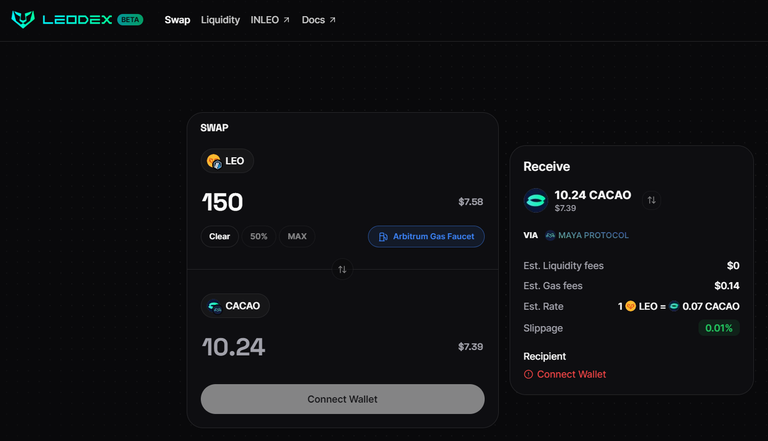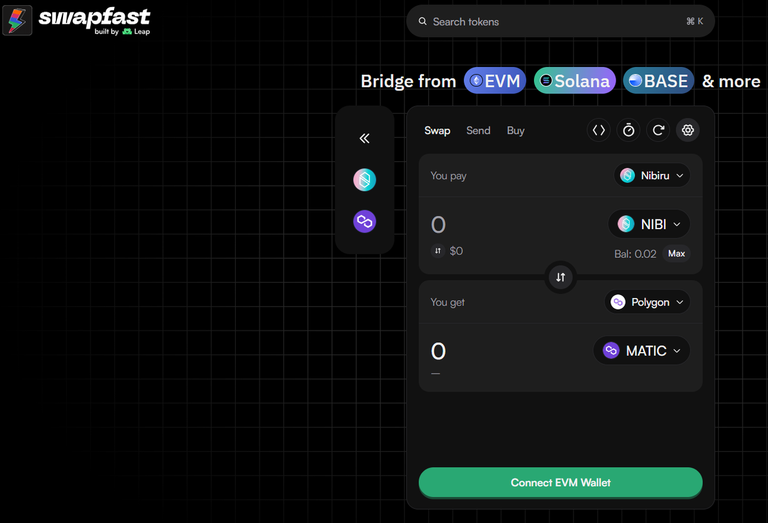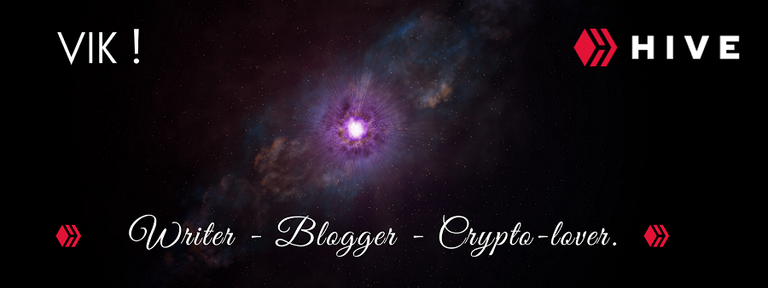Blockchain Bridges as a Solution for Scalability and Cooperation between Ecosystems | Undestanding this Technology [EN/ES]
VERSIÓN EN ESPAÑOL (click aquí)
En más de una oportunidad nos hemos aventurado a realizar operaciones sin preguntarnos qué estábamos haciendo, o al menos profundizar en ello. Muchas veces es un proceso muy intuitivo, mientras que en otras oportunidades es una verdadera confusión, haciendo que no nos animemos a proceder con nuestra operación.
Sin lugar a dudas los puentes de blockchain son una solución que está creciendo de forma rápida a la vez que la tecnología evoluciona. La interoperabilidad ahora tiene una tendencia mucho más positiva porque es posible que dos ecosistemas puedan estar unidos a través de un puente, lo que permite que tanto el flujo de usuarios como de inversiones, crezca.
On more than one occasion we have ventured to carry out operations without asking ourselves what we were doing, or at least delving into it. Many times it is a very intuitive process, while in other instances it is a real confusion, causing us not to dare to proceed with our operation.
Undoubtedly, blockchain bridges are a solution that is growing rapidly as technology evolves. Interoperability now has a much more positive trend because it is possible for two ecosystems to be connected through a bridge, allowing both user flow and investment to grow.

Image created using OpenArt AI
VERSIÓN EN ESPAÑOL (click aquí)
Obviamente debemos mencionar que cuando dos ecosistemas están unidos, permiten de alguna manera el intercambio de tokens y datos, lo cuál es crucial para un crecimiento mutuo. Llegados a este punto, podemos dar a entender que existió una colaboración entre los desarrolladores de ambos proyectos de blockchain que lo hicieron posible.
Pero no es tan sencillo como parece. Sabemos que cada blockchain tiene sus protocolos y reglas que caracterizan la estructura de la cadena, lo cual hay que hacer un trabajo extra para poder lograr que ambas resulten compatibles.
Un ejemplo de compatibilidad muy acertado es el de Ethereum con una side-chain. Por mencionar un caso imaginemos que tenemos ETH en L1 (Red principal de Ethereum) y queremos tener estos fondos en la blockchain de Arbitrum, que es de capa 2 (L2). En este caso necesitaremos utilizar un puente, que lo que hará es bloquear los ETH y creará una cantidad equivalente en arbi-ETH, o simplemente a-ETH. Luego del proceso, llegarán los fondos a la billetera destino, si no es la misma, puede ser una alternativa.
También podría existir la necesidad de operar de L2 a L2, y por suerte hay plataformas que lo permiten. En mi caso tuve que acudir a este tipo de operación, la cual fue rápida y eficaz.
Obviously we must mention that when two ecosystems are connected, they allow for the exchange of tokens and data in some way, which is crucial for mutual growth. At this point, we can infer that there was collaboration between the developers of both blockchain projects that made it possible.
But it's not as simple as it seems. We know that each blockchain has its protocols and rules that characterize the structure of the chain, which requires extra work to make them compatible.
A very successful example of compatibility is Ethereum with a side-chain. For instance, let's imagine we have ETH on L1 (Ethereum's main network) and we want to have these funds on the Arbitrum blockchain, which is a layer 2 (L2). In this case, we will need to use a bridge, which will lock the ETH and create an equivalent amount in arbi-ETH, or simply a-ETH. After the process, the funds will arrive at the destination wallet, if it's not the same, it can be an alternative.
There might also be a need to operate from L2 to L2, and luckily there are platforms that allow this. In my case, I had to resort to this type of operation, which was quick and effective.

Screenshot obtained from Orbiter Finance
VERSIÓN EN ESPAÑOL (click aquí)
También podríamos llegar a pensar en tener Bitcoin y querer interactuar en un ecosistema donde la blockchain sea la de Ethereum. A simples rasgos pensaríamos que existe una imcompatibilidad, y de hecho la hay. Sin embargo, aquí es donde entra en juego el llamado envoltorio, que es un proceso que permite la interoperabilidad. De esta manera, si lo que deseamos es transferir BTC a la red de Ethereum, al utilizar un puente que permita estas características, el proceso sería el siguiente.
Se deposita Bitcoin y el sistema generará su equivalente en el token WBTC, que es un proceso denominado Wrapping. De esta manera podremos utilizar Bitcoin en una red en la cual su protocolo es ERC-20, y como sabemos es compatible con la red Ethereum. Como casos de uso se me vienen a la mente poder acceder a las DeFi y poder aportar liquidez, o lo que muchos podemos mencionar, acceder y probar nuevas dApps.
Está claro que uno va adquiriendo experiencia y conocimiento mientras más utiliza estas tecnologías. Sin ir más lejos, lo más similar a un puente lo tenemos en Hive-Engine. Pues cuando queremos utilizar nuestros HIVE para comprar tokens, el proceso que se realiza es parecido al Wrapping. Es decir, se envuelven los HIVE en SWAP.HIVE, y viceversa (Unwrap).
Aquí es donde entendemos que tokens y criptomonedas no son lo mismo, aunque para el común entendimiento de todos solemos llamar a los fondos como tokens. Un token es un activo que circula dentro de una blockchain y no tiene posibilidad de salir de la red si no es por medio del Unwrapping (que no siempre está disponible). Por ejemplo si tenemos BNB en la L2 de Hive, tendremos SWAP.BNB, y para sacarlos fuera de la blockchain hacia una billetera en MetaMask, necesitaremos proporcionar una dirección BEP-20.
We could also consider having Bitcoin and wanting to interact in an ecosystem where the blockchain is Ethereum's. At first glance, we might think there is an incompatibility, and in fact there is. However, this is where the so-called wrapping comes into play, which is a process that allows interoperability. In this way, if we want to transfer BTC to the Ethereum network, by using a bridge that allows these features, the process would be as follows.
Bitcoin is deposited and the system will generate its equivalent in the WBTC token, which is a process called Wrapping. This way, we can use Bitcoin on a network in which its protocol is ERC-20, and as we know, it is compatible with the Ethereum network. Use cases that come to mind include being able to access DeFi and provide liquidity, or, as many can mention, access and try new dApps.
It is clear that one gains experience and knowledge the more one uses these technologies. To give a close example, the closest thing to a bridge we have is in Hive-Engine. When we want to use our HIVE to buy tokens, the process that is done is similar to Wrapping. That is to say, the HIVE is wrapped in SWAP.HIVE, and vice versa (Unwrap).
This is where we understand that tokens and cryptocurrencies are not the same, even though for the common understanding of everyone we tend to call funds tokens. A token is an asset that circulates within a blockchain and has no way to leave the network except through Unwrapping (which is not always available). For example, if we have BNB on the L2 of Hive, we will have SWAP.BNB, and to move them out of the blockchain to a wallet on MetaMask, we will need to provide a BEP-20 address.

Screenshot obtained from LeoDEX
VERSIÓN EN ESPAÑOL (click aquí)
Luego está el caso de que hay tokens que no se pueden retirar de esta forma, como los que son creados específicamente para funcionar sobre la L2 de Hive. Estos tokens son creados por proyectos liderados por desarrolladores que logran impulsar el ecosistema. Eso sí, también existen casos específicos en los que un token puede operarse fuera de la red, como es el caso de LEO, que ahora es posible utilizarlo en LeoDEX, CacaoSwap o con el interesante protocolo de Maya Protocol, incrementando las posibilidades de uso.
Comúnmente se piensa que los puentes descentralizados son mucho más seguros debido a que se adaptan al código. Por esa razón quien hace el procedimiento no es más ni menos que un contrato inteligente, a diferencia de los centralizados donde los fondos están a custodia de un tercero, y lamentablemente son una atracción para los hackers ya que se mueven una gran cantidad de fondos a diario. Además hay que tener en cuenta que si optamos por un puente centralizado, este debe tener buena reputación y que disponga de una trayectoria marcada que ofrezca seguridad al momento de elegirlos.
Then there is the case that there are tokens that cannot be withdrawn in this way, like those that are created specifically to function on Hive's L2. These tokens are created by projects led by developers who manage to drive the ecosystem. However, there are also specific cases in which a token can be operated outside the network, as is the case with LEO, which can now be used on LeoDEX, CacaoSwap, or with the interesting Maya Protocol protocol, increasing the possibilities of use.
Decentralized bridges are commonly thought to be much safer because they adapt to the code. For that reason, the party conducting the procedure is nothing more or less than a smart contract, unlike centralized ones where funds are held in custody of a third party, and unfortunately, they are an attraction for hackers as a large amount of funds are moved daily. Also, it is important to consider that if we opt for a centralized bridge, it must have a good reputation and a track record that provides security when choosing them.

Screenshot obtained from SwapFast
VERSIÓN EN ESPAÑOL (click aquí)
En muchos casos salen al mercado criptomonedas que aún no han sido listadas en los principales exchange, o puede darse que se requiera de verificar la identidad a través de KYC. Tal vez esta opción no sea la que más nos guste, así que si deseamos vender estos activos, nuestra solución es ver si existe un puente que permita cambiarlos directamente a otra criptomoneda de una blockchain que sí esté disponible para el uso que queramos. Por ejemplo si ya disponemos de una cuenta de Binance, solo nos enfocaríamos en cuál criptomoneda sí es compatible a enviar allí para comerciarla, por ejemplo MATIC.
En muchos casos cuando una criptomoneda sale al mercado pero aún no es listada en un exchange de confianza, la comunidad que está pendiente a la comunicación del equipo detrás del proyecto, logra encontrar qué maniobras realizar para comerciar con ella en el menor tiempo posible (tengamos en cuenta la volatidad en base al tiempo). Así que creo que investigar por ahí es un buen primer paso para lograr el objetivo y aprender sobre la marcha, y que ello signifique un conocimiento valioso para oportunidades similares.
Lo que sí debes tener en cuenta es que el proceso que realiza un puente puede implicar pasar por varias blockchain, encontrando la mejor ruta posible para adquirir esas tan ansiadas criptomonedas. Pero esto solo es parte del proceso y de la emoción, ¿verdad?
In many cases, cryptocurrencies are released to the market that have not yet been listed on major exchanges, or it may be necessary to verify identity through KYC. Perhaps this option is not the one we like the most, so if we want to sell these assets, our solution is to see if there is a bridge that allows us to exchange them directly for another cryptocurrency from a blockchain that is available for the desired use. For example, if we already have a Binance account, we would only focus on which cryptocurrency is compatible to send there for trading, for example, MATIC.
In many cases, when a cryptocurrency is released to the market but is not yet listed on a trusted exchange, the community that is attentive to the project team's communication manages to find maneuvers to trade with it as quickly as possible (taking into account the time-based volatility). So, I believe that researching there is a good first step to achieve the goal and learn along the way, and that it represents valuable knowledge for similar opportunities.
What you must consider is that the bridge process may involve passing through various blockchains, finding the best possible route to acquire those desired cryptocurrencies. But this is only part of the process and the excitement, right?

- Translated and formatted with Hive Translator by @noakmilo.
- Canva has been used to edit the main image.
Posted Using InLeo Alpha
👏 Keep Up the good work on Hive ♦️ 👏
❤️ @gwajnberg suggested sagarkothari88 to upvote your post ❤️
🙏 Don't forget to Support Back 🙏
Thank you very much for your support!🚀
@vikvitnik, you are most welcome!
Please Support Back
Here is !PIZZA token gift for you
$PIZZA slices delivered:
@hivecurators(5/5) tipped @vikvitnik